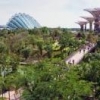Search the Community
Showing results for tags 'nea'.
-
NEA to lower vehicle noise levels, tighten motorbike emissions from 2023 Anyone knows what's the current noise level of a stock supercar? How about those LTA-compliant aftermarket exhaust?
-
SINGAPORE: A one-year trial to collect food waste from residents will be launched in the Ang Mo Kio-Toa Payoh sector in November, with 10 “smart lockers” placed at selected Housing & Development Board (HDB) blocks in the area, the National Environment Agency (NEA) said on Wednesday (Sep 22). The trial will be conducted by 800 Super Waste Management, which was on Wednesday awarded a new public waste collection contract for the sector. The sector covers the planning areas of Ang Mo Kio, Bishan, Serangoon and Toa Payoh. “These smart lockers will be installed with an Internet of Things remote access smart system, a QR code scanner and a load cell weighing scale,” NEA said in a media release. “Participating households will be issued a unique QR code and air-tight reusable plastic containers to store their food waste. “Participating households can then do a one-to-one exchange of the reusable plastic containers when they drop off their food waste-filled containers into the smart lockers.” Participants will receive reward points via the 800 Super mobile app for depositing their food waste. These points can be exchanged for grocery vouchers. “If the trial is successful, 800 Super will deploy another 83 smart lockers to other HDB blocks in the sector,” NEA said. Source & Full article: CNA/ https://www.channelnewsasia.com/singapore/food-waste-lockers-hdb-ang-mo-kio-toa-payoh-2193986 -------- Think Singaporeans will warm up with this idea of food waste management? I think what concerns me is the smell from these food items and the pests that itll attract if its not properly carried out...
- 15 replies
-
- 3
-

-
- sustainability
- food waste
-
(and 3 more)
Tagged with:
-
Speed limit for buses on roads is 50km/h. Winds Hit Up To 49.3KM/H At Places Like Admiralty Singaporeans may have noticed strong gusts of wind when going outdoors today (18 Jan), threatening to blow our laundry away. You’re not imagining it as wind speeds in our island nation hit as high as 49.3 km/h in places like Admiralty. Such increases in wind speeds are usually experienced during the presence of a Northeast Monsoon surge. Admiralty winds hit 49.3 km/h According to the Meteorological Service Singapore, northeast winds hit Admiralty at higher speeds than the rest of Singapore. At about 11am, the area saw wind speeds of up to 49.3 km/h — that’s almost as fast as our buses travel. To put this into perspective, the speed limit for buses on roads is 50 km/h. While the speeds were not sustained for long, Admiralty still experienced wind speeds of over 30 km/h for about 4 hours. Strong winds all around Singapore Other than Admiralty, other parts of Singapore like Tai Seng also experienced high wind speeds of up to 37.4 km/h between 10am and 3pm. Changi’s wind speeds hit 31.9 km/h as well in the afternoon. Well, as it’s been pretty cloudy over the past few days, the breezy weather certainly helps to dry our clothes even as the sun hides. Windy weather may continue According to National Environment Agency (NEA), Singapore experienced average wind speeds ranging between 15-30 km/h. As of time of writing, Tuesday (19 Jan) is forecasted to have around the same conditions. This may be good or bad depending on how well you clip your laundry. Reminder to clip laundry well & use paperweights for documents While Singapore may not have the title of The Windy City – it goes to Chicago in the United States – it’s refreshing to let some fresh air breeze through the house. However, remember to batten down the hatches and find some paperweights. You don’t want to return to a mess should you forget to close the windows.
- 23 replies
-
- 6
-

-

-
- strong wind
- windy
-
(and 1 more)
Tagged with:
-
Singapore Sees Flash Floods In Numerous Areas On 30 Apr Due To Torrential Rain source: https://mustsharenews.com/flash-floods-singapore/ Flash Floods Hit Singapore In Tampines & Serangoon North Singaporeans across the island saw heavy rain descending on Thursday (30 Apr) afternoon. Stormy weather involving loud & frequent cracks of thunder and streaks of lightning lit up dark cloudy skies across Central, West and East areas in Singapore. While many of us at home enjoyed the cooler weather, others felt first-hand the devastating effects of such a downpour. PUB issues urgent flash flood notices Numerous parts of Singapore reportedly saw flash floods as a result of the rain. PUB, the nation’s water agency even issued 3 flash flood notices within a short span of 30 minutes. According to PUB notices, most of the flash floods occurred in the Eastern region of Singapore at these 3 locations: Jalan Teliti Tampines Road (Near Hougang Ave 1) Upper Paya Lebar Road Flash floods at Serangoon North washed away road barriers Serangoon North also experienced its fair share of ‘flash floods’ at around 3pm this afternoon. Captured via an MS News reader’s Insta-stories, she described that it was “raining massively” at her house. The resident of this HDB apartment complex also described watching “barriers from roadworks” under her flat get “washed away” due to accumulated water from the rain. Joo Seng HDB carpark affected by ‘ponding’ In a video uploaded by All Singapore Stuff, ‘ponding’ seems to have occurred at a HDB area in Joo Seng as well. We can observe that the heavy rainfall caused the entire HDB parking lot to fill up with murky water, as a lone taxi tries to exit the premises. Ponding should have subsided by now With May’s weather forecast predicting more frequent thunderstorms, we can expect future occurrences of flash floods. Thankfully, PUB has confirmed most of the ponding locations mentioned in their alerts have subsided at the time of writing. However, since most of us are staying home during the month of May – with extended Circuit Breaker measures still in place – we hope that the effects will be minimal on our daily lives.
-
Supporting Cleaner and Greener Vehicles for A Sustainable Land Transport Sector 1 Under the Land Transport Master Plan 2040, we have committed to encouraging adoption of cleaner and greener vehicles for a more environmentally sustainable land transport sector. As part of Budget 2020, Government is introducing measures to facilitate adoption of Electric Vehicles (EVs), which is one of the cleanest and lowest-emission vehicular technologies available today. We have also reviewed the road tax framework to better reflect the current trends in vehicular efficiency and parity with Internal Combustion Engine (ICE) vehicles. EV Early Adoption Incentive 2 Today, EVs incur higher upfront ownership cost as compared to equivalent ICE vehicles. EVs are becoming more affordable, and the ownership cost gap between EVs and ICEs is expected to close over time. However, this ownership cost gap is currently a significant barrier in the adoption of EVs. To address this, we will launch an EV Early Adoption Incentive (EEAI) for the next three years, from 1 January 2021 to 31 December 2023. Owners who register fully electric cars[1] will receive a rebate of 45% off the Additional Registration Fees (ARF), capped at $20,000[2]. This EEAI will lower the upfront cost of an electric car by an average of 11% and narrow the upfront cost gap between electric and ICE cars. This scheme will apply to individual and fleet vehicle owners, such as taxi and car rental companies, and will cost Government an estimated $71 million over the next 3 years. Annex A illustrates the rebates for a few common EV models. Revised EV Road Tax Structure 3 We have reviewed the EV road tax schedule[3]. The revised schedule will apply to all new EVs registered from 1 January 2021 onwards and is shown in Annex B. 4 Currently, ICE vehicles incur fuel excise duties through fuel consumption. Owners of fully electric cars have thus far not been subjected to fuel excise duties. To enhance parity with ICE vehicles until we are ready to impose a distance-based tax, we will impose an additional tax of $700/year for fully electric cars, which is sized to partially recover for the fuel excise duties paid by equivalent ICE cars. 5 To cushion the impact, the Government will phase in this additional tax over three years (see Annex C for the phase-in schedule). The full quantum will be charged from January 2023 onwards. 6 As part of the revised EV road tax structure, we will also revise the methodology for calculating the variable component of the road tax for EVs, which is tiered by power rating, to better reflect the current trends in vehicle efficiency from January 2021. This will lead to an across-the-board reduction in this variable component of road tax for EVs and some hybrids. 7 In summary, the revised electric car road tax schedule will comprise: An additional flat component of $700/year, phased in over three years; and The existing variable component tiered according to power rating, and which will be revised to better account for improvements in vehicular efficiency; and 8 Under the revised road tax framework, mass market electric cars will incur an annual usage cost[4] which is still about 9% lower than their ICE equivalents. Electric Motorcycles and Electric Light Goods Vehicles (LGVs) 9 From 1 Jan 2021, the additional tax will also be levied on fully electric motorcycles ($200/year); and fully electric light goods vehicles (LGVs) and goods-cum-passenger vehicles (GPVs) not exceeding 3.5 metric tonnes ($190/year). Details on the treatment of electric buses, heavy goods vehicles, and GPVs heavier than 3.5 metric tonnes will be announced at a later date. Petrol-Electric Hybrids 10 For petrol-electric hybrids that currently pay road tax based on their maximum electric power rating, we will align their road tax schedule with the revised variable component of the electric car road tax schedule. Since these vehicles remain largely petrol-fuelled, we do not intend to impose the additional flat component on them for now. Overall, these hybrids will have their road tax reduced by an average of 29%. 11 LTA will inform existing EV owners of the implications of the revised road tax schedule on them, in due course. 12 These measures will complement the Government’s efforts in expanding the public charging infrastructure for EVs. Together with other existing and new instruments, such as the Vehicular Emissions Scheme (VES), the Commercial Vehicle Emissions Scheme (CVES)[5] and Early Turnover Scheme (ETS), we will support the long-term adoption of cleaner and greener vehicles for a more sustainable land transport sector. [1] This includes electric taxis. [2] Subject to a minimum ARF of $5,000. [3] This includes electric taxis. [4] For ICEs, this includes road tax, fuel excise duties, fuel cost, insurance cost and maintenance cost. For EVs, this includes road tax, electricity cost, insurance cost and maintenance cost. [5] The CVES is a new scheme, for which details will be announced at MEWR’s COS.
- 168 replies
-
- 12
-

-
New facility in Ang Mo Kio aims to produce 5 million mosquitoes a week to fight dengue source: https://www.straitstimes.com/singapore/environment/new-facility-in-ang-mo-kio-aims-to-produce-five-million-mosquitoes-per-week-to SINGAPORE - The war on dengue has received a boost with the opening of a new facility in Ang Mo Kio that can breed millions of mosquitoes a week to prevent urban female Aedes aegypti mosquitoes from producing offspring. The launch on Monday (Dec 2) comes at the tail end of a year in which Singapore has experienced its third-biggest dengue outbreak. As of Nov 21, more than 14,470 people here had been infected with the disease, with 20 lives lost. The new facility will allow the National Environment Agency (NEA) to scale up Project Wolbachia by producing up to five million mosquitoes a week. The project involves the release of male Wolbachia-Aedes aegypti mosquitoes to suppress the urban Aedes aegypti mosquito population, which is the primary vector of dengue, chikungunya and Zika here. When the released male Wolbachia-Aedes aegypti mosquitoes mate with urban female Aedes aegypti mosquitoes that do not carry Wolbachia, the resulting eggs do not hatch. The NEA said that over time, the continued release of male Wolbachia-Aedes aegypti mosquitoes is expected to bring about a gradual reduction in the urban Aedes aegypti mosquito population, and hence lower the risk of dengue transmission. Speaking at the launch of the new facility, Senior Minister of State for the Environment and Water Resources Amy Khor said: "If we are serious about confronting climate change and other challenges, dengue control cannot simply be just 'business as usual'. We cannot just do more of the same." Explaining the need for action, Dr Khor, who is also Senior Minister of State for Health, said the dengue situation is likely to worsen over the next few decades as a result of global warming. This is because higher temperatures result in mosquitoes breeding faster, and cause the dengue virus to replicate at a quicker rate. The new $5 million facility in Techplace II at Ang Mo Kio Avenue 5 is expected to provide scalability in the production and release of Wolbachia-Aedes aegypti mosquitoes needed for Project Wolbachia. NEA chief executive Tan Meng Dui said the facility's target capacity a week is a tenfold increase over that of the previous facility, which was located in Neythal Road and is now defunct. "This facility and the technologies it houses will play a key role in Singapore's efforts to deploy Wolbachia technology as part of our integrated vector control programme to tackle these diseases (dengue, chikungunya and Zika)," he added. The highly automated facility in Ang Mo Kio, which is thrice the size of the previous one, incorporates new technology and machines to boost production capacity and increase productivity, including a male-female pupae sorter, which was co-developed by NEA and local start-up Orinno Technology. The sorter is 10 to 20 times faster than the previous method used to separate the two types of pupae and larvae, and uses lighting, water-flow control and a specially designed sieve to achieve high accuracy and high efficiency in the separation process. The facility also uses automated larvae and pupae counters. The NEA has also been working closely with the Joint Food and Agricultural Organisation of the United Nations (FAO) and the International Atomic Energy Agency (IAEA) to incorporate low-dose X-ray irradiation in the production process. This step causes any female Wolbachia-Aedes mosquitoes that are inadvertently released to become infertile, preventing any build-up of such mosquitoes, which would hamper Project Wolbachia's effectiveness. More devices, such as a high-throughput larvae-rearing system designed by FAO, IAEA and Orinno, are in the pipeline to further improve scalability for Project Wolbachia in future. Dr Khor said the impact of Project Wolbachia goes beyond the realm of public health. "The innovative solutions developed and collaborations formed through this important scientific initiative have also advanced research and provided economic opportunities in Singapore," she added.
-
Friend shared with me. Quite fun for those interested. 1544433287345_Car_Prefix.pdf
-
Scatter ashes ftw NEA to introduce inland ash scattering services at Choa Chu Kang Cemetery and Mandai Crematorium http://www.channelnewsasia.com/news/singapore/nea-to-introduce-inland-ash-scattering-services-at-choa-chu-kang-10459204
- 2 replies
-
- after death service
- cremation
-
(and 3 more)
Tagged with:
-
http://www.straitstimes.com/singapore/officer-accused-of-molesting-woman-gave-different-account-of-what-happened-nea Officer accused of molesting woman gave different account of what happened: NEA SINGAPORE - A National Environment Agency (NEA) officer accused of hugging a woman from behind has given a different account of what happened, NEA said in a statement on Thursday (Jan 14). "The officer highlighted has given his account of what had happened, which is different from what was alleged, to the police," an NEA spokesman said. NEA said that they are aware of the case which happened at Suntec City Tower 2 on Jan 8. The enforcement officers had seen a woman smoking under the covered walkway near the staircase of Suntec City Tower 2, and asked for her particulars. "The incident occurred as our officers were requesting for her particulars in order to take enforcement action against her for smoking in a smoking prohibited place," NEA said. "Subsequently, the enforcement officers requested police assistance." The agency did not provide more details as the police are investigating the case. The 33-year-old woman, who has not been named, told Shin Min Daily News that an NEA enforcement officer hugged her from behind when he was trying to stop her from leaving. She told the Chinese daily that she lit up her cigarette as she was approaching a smoking area at Suntec City Tower 2 during her lunch break. She was then stopped by a man who said he was an NEA officer. "The man claimed that he is an NEA officer and asked me to show my identity card, but I did not bring it downstairs so I quickly stubbed out my cigarette and tried to leave," she told Shin Min. As she was heading back to her office, she said that she was stopped by a second man, who blocked her way. She told Shin Min that the man asked her for her identity card, but did not show his own identification. She ignored him, called her husband and continued to walk back to her office building. As she was using her staff pass to enter a gantry at the office building, she said she felt someone hug her from behind. When she managed to break free, she realised that it was the second man who had tried to stop her earlier. The man then grabbed her left arm, only letting go when she shouted: "What do you want? Why are you doing this?" She said that the officer had touched her chest and she felt humiliated. She then called the police, Shin Min reported. After the incident, she tried to board a taxi to leave the area but was stopped by the man, who opened the door and told the driver not to drive off. The woman then alighted. It is unclear what happened next. Later, the woman's husband arrived at the scene and they went to a police station to make a report. The police confirmed that a report was made and said that they are investigating. NEA said that their officers are trained to handle "challenging field situations", and the agency has "strict protocols" to guide them. "This includes engagement and disengagement of offenders, as well as handling of situations where offenders try to escape," NEA said. Offenders caught smoking in a prohibited area can be fined from $200 to $1,000, according to the agency's website.
-
http://www.transitioning.org/2015/07/19/staff-sacked-by-nea-for-falsifying-records-due-to-salary-ceiling/ The author charges NEA accused him of falsifying records for Dengue cluster-it is a serious allegation. Might NEA come forward to clarify?
- 10 replies
-
- nea
- vivian balahkrisnan
-
(and 5 more)
Tagged with:
-
yucks...saw many news on this matter on FB and other media liao. think we have to cook and eat at home liao... What could this huge ass thing be? According to speculators online, it could be used for "Gutter oil". According to Tony Keng Hong Tan, who took the photo, policemen are guarding this mobile setup as of 1025am today. What is Gutter oil? : Gutter oil (simplified Chinese: 地沟油; traditional Chinese: 地溝油; pinyin: Dìgōu yóu) is a term used in China to describe illicit cooking oil which has been recycled from waste oil collected from sources such as restaurant fryers, sewer drains, grease traps and slaughterhouse waste. Reprocessing is often very rudimentary; techniques include filtration, boiling, refining and the removal of adulterants. It is then packaged and resold as a cheaper alternative to normal cooking oil. Another version of gutter oil uses discarded animal parts, animal fat and skins, internal organs, and expired or otherwise low-quality meat which is then cooked in large vats in order to extract the oil. Used kitchen oil can be purchased for between 859 and 937 dollars per ton while the cleaned and refined product can sell for 1,560 per ton. Thus there is great economic incentive to produce and sell gutter oil. It is estimated that up to one in every ten lower market restaurant meals consumed in China is prepared with gutter oil. This high prevalence is due to what Feng Ping of the China Meat Research Center has made clear: "The illegal oil shows no difference in appearance and indicators after refining and purification because the law breakers are skillful at coping with the established standards." - From Wikipedia
-
How do government bodies send out messages in 4 languages. is there an 'expert' in each language handling the translation? Anyway, anyone got more news on this? What was the translated version like. http://www.straitstimes.com/news/singapore/more-singapore-stories/story/vivan-balakrishnan-asks-nea-rectify-badly-translated-tam Vivan Balakrishnan asks NEA to rectify badly translated Tamil flyers 'as soon as possible' SINGAPORE - Dr Vivian Balakrishnan has said that he has asked the National Environment Agency to rectify badly translated Tamil flyers "as soon as possible". The Minister for the Environment and Water Resources was replying to undergraduate J.S. Sasikumar's email regarding the flyer, which came attached with a photograph. The student, who stated that he is a member of the Tamil Language Society at the National University of Singapore, said in an email: "The Tamil text makes no sense whatsoever. It is as if the English text was put through an online translator to generate the Tamil translation." In response, Dr Balakrishnan thanked the student for highlighting the issue and added: "I totally agree with you on the need for accurate translations."
-

NEA claims diesel vehicles are still as pollutive as before
SGCM_editorial posted a blog entry in MyAutoBlog
The National Environmental Agency recently revealed that vehicles, especially diesel powered ones, are just as pollutive as a few years ago. Are we backwards when compared to the western continents in embracing clean diesel technologies? The figures say it all - 5,809 summons issued for emission-related offences for the first nine months of this year, compared to 6,381 in 2012 and 4,794 in the year before. Though it is arguable that this year saw a slight reprieve from last year - with three months to go but 500 cases less - the current figure is still substantially more than that of 2011’s. The legal limit for vehicle emission in Singapore is 50 Hartridge Smoke Units (HSU) - any vehicle caught exceeding the limit will be fined up to $5,000. Many see it as a natural course of actions. Diesel vehicles are often perceived as being pollutive, loud and unrefined. But on hindsight, it can actually mean that our local nation has been dilatory in adopting clean diesel technologies. We have spoken much about technological advancement in the field of combustion engines, especially those that run on diesel. The efficiency, refinement, and emission standard have been substantially improved, so much so that diesel engines have found their way into premium passenger cars. Diesel powered cars are particularly favoured over their petrol driven counterparts in the western continent. Fear not, though, as a new rule will kick in starting next year - a smoke opacity test that requires diesel cars to score an emission result of 40 HSU and below, before their road tax can be renewed. -
With the Lunar New Year approaching, many restaurants and caterers have said they are facing more food orders. The National Environment Agency (NEA) has also stepped up the number of inspections it conducts during the festive season to ensure food safety. The number of inspections over Christmas and New Year last year and in the build-up to this year's Lunar New Year increased by 27 per cent compared to the previous festive season. The inspections include measuring and checking the temperature of the food served, to ensure there is no cross-contamination. And they seem to be working, with the number of hygiene lapses on the part of food retail operators decreasing. In 2013, NEA issued a total of 2,198 enforcement tickets for hygiene lapses. This was a drop of 749 tickets compared to the 2,947 issued in the previous year. Common offences included failure to keep licensed premises clean and free from pests, as well as failure to register food handlers. One of the restaurants Channel NewsAsia spoke to said they are also tightening their internal safety measures during the festive season. Irene Ong, corporate hygiene manager at Shangri-La Hotel, said: "We also carry out more inspections, internal food safety inspections. We usually do it three times a week, now we are doing it more frequently. “We carry out daily inspections. During the inspections we also remind our chefs to ensure good personal hygiene." Source: http://www.channelnewsasia.com/news/singapore/nea-steps-up-food-safety/969814.html NEA increases inspections at eateries, caterers The National Environment Agency (NEA) has stepped up checks on restaurants and caterers to minimise the risk of food poisoning incidents over Chinese New Year. The number of inspections over this festive season - which includes Christmas, New Year and the lead-up to Chinese New Year - has increased by 27 per cent, compared to the same period in 2012. The NEA has also issued advisories to event organisers, and a spokesman said: "Other than the usual checks, our officers keep a lookout for any instances of poor food and personal hygiene that may result from operators ramping up their production to cope with the increase in business volume and orders." This includes cross contamination between raw and ready-to- eat food and poor personal hygiene practices of food handlers. Source: http://www.straitstimes.com/breaking-news/singapore/story/nea-increases-inspections-eateries-caterers-20140130
- 1 reply
-
- nea
- food safety
-
(and 6 more)
Tagged with:
-
This article appeared in the papers today. Quite unusual, NEA had to go to court to ACQUIT the company they wanted to charge..... http://www.singaporelawwatch.sg/slw/headlinesnews/37420-nea-asks-court-to-acquit-firm-booked-over-toxic-material.html?utm_source=rss%20subscription&utm_medium=rss NEA asks court to 'acquit' firm booked over 'toxic' material THE National Environment Agency (NEA) has asked a court to effectively acquit a firm that the agency had booked last year for moving harmful material illegally. Galaxy Logistics had faced a fine of up to $30,000 for transporting a hazardous chemical outside approved hours. Without elaborating, the NEA prosecutor had asked a district court on Feb 5 to grant Galaxy a discharge amounting to an acquittal. In reply to queries from The Straits Times, NEA said an offence involving a few parties had been committed as hazardous substances were found to have been transported outside stipulated hours. NEA did not specify who the other parties were but said: "Galaxy Logistics was charged for its role in the offence but NEA has withdrawn the charge based on further evidence. NEA is continuing with its investigations and will take appropriate legal action. Public safety remains our paramount concern." However, Galaxy's defence counsel Christopher Bridges said he did not produce any new evidence in the pre-trial conferences. Instead, he had argued that the prosecution had not been able to provide any legislation that specifically stated that the chemical transported was a hazardous material. According to court documents, Galaxy was transporting a detergent known as Divosan Active SU 388 VTS in a truck along Pioneer Road just past midnight on Oct 2, 2012. The detergent contains peracetic acid, which NEA said was hazardous. NEA issued a summons to the firm in May last year for moving the material outside the prescribed hours of between 7am and 7pm. Galaxy was alleged to have committed an offence as NEA said peracetic acid was listed as hazardous in the Second Schedule of the Environmental Protection and Management Act (EPMA) as well as the Schedule of Environmental Protection and Management (Hazardous Substances) Regulations. However, Mr Bridges said there was no reference to peracetic acid in both lists. He also said it would be unreasonable to read "organic peroxides" in the EPMA to include all types of organic peroxides. There were different classes of organic peroxides and "it would not be Parliament's intention to include non-hazardous organic peroxides into the purview of the regulations and the EPMA", he said. The charge was "too arbitrary and hence defective as peracetic acid is not clearly and explicitly listed... as a hazardous substance", he added.
-

Combined. The Traffic Police, Land Authority and National Enviroment Agency
SGCM_editorial posted a blog entry in MyAutoBlog
Too bad that a proposal to merge the Traffic Police (TP) with the Land Transport Authority (LTA) never materialised. The plan, made about 10 years ago, was scuttled at the eleventh hour – for reasons that are still unknown. Imagine the efficiency and scope that such a merged entity would have had on enforcement efforts. Today, both bodies are strapped for manpower and struggling to cope with Singapore’s rising vehicle population, often having to outsource various enforcement tasks to external parties. Despite the best efforts of the TP and the LTA, errant motorists still get away with parking and moving violations. The former ranks as the top complaint received by the LTA, which shows that much more can be done in the area. And the latter is becoming an increasingly worrying trend, highlighted by a number of tragic accidents in recent months. Even if the statistics do not show any spike in serious traffic accidents, any motorist will agree that a number of dangerous driving behaviours are a common sight these days. One is the usage of mobile devices while driving. Despite the harsh penalties that such offences attract, many drivers are texting or putting a mobile phone to their ear while on the move. Running a red light has also become more common now. Stand at any junction not equipped with red-light cameras and you will see vehicles proceeding even well after the lights have turned red. It is strange that the authorities have not relied more on technology to clamp down on this dangerous practice. With the latest surveillance systems, images of violators can be processed at one centralised backroom – unlike the older versions, which required manual on-site downloads to be done periodically. Today’s systems are also fairly cost-efficient, from acquisition to operation. But back to a merger between the TP and the LTA. Such a move would have created a “multiplied” force of officers that can act against a wider variety of offences as they happen on the road. Currently, the division of duties allows many culprits to continue their wayward ways with impunity. To address other frustrating on road trends (see sidebar), the vehicular enforcement department of the National Environment Agency (NEA) should also be part of the same equation. Together with the TP and the LTA, the NEA can issue summonses to motorists who throw litter from their vehicles, as well as those who drive smoke-belching vehicles. Smokers form a big group of litterbugs-on wheels. Whenever you see someone dangling a cigarette out the car window, you can almost be certain that he or she would fling it nonchalantly out once it is spent. Other items often flung out of moving vehicles include plastic bags, pieces of used tissue paper, junk mail and flyers, drink cans, and even empty styrofoam food carriers. Despite mandatory vehicle inspection, smoky tailpipes are still spotted everywhere. They belong almost exclusively to diesel vehicles such as taxis, buses and trucks. Torque understands that many of their operators fi ll up with bootleg diesel – cheaper fuel bought from ships anchored around Singapore. Often, the diesel does not meet the Euro 4 emission standard that authorised fuel retailers have to follow. And when it is time for these “dirty” vehicles to be sent for their compulsory check-ups, the operators simply fill them up once with biodiesel. This, it seems, is sufficient to ensure their emissions meet regulatory standards at the point of inspection. So, the solution is to nab offenders on the go. And the only way to do this properly is to have a sizeable force of enforcement officers – such as one created by a tripartite merger between the TP, the LTA and the NEA. Those opposed to such an alliance would say the three agencies already work quite well together despite being separate entities. Even if that is true, there is no harm in them working even more closely. And the issue is not so much about the level of cooperation, but the increased effectiveness an enlarged enforcement agency can bring. If a full-blown merger is too much to manage (as the scuttled union between the TP and the LTA seems to suggest), a permanent joint venture between the enforcement departments of the three agencies should be considered. Because, as it is today, three departments working separately is clearly inefficient. If you disagree, take note the next time you are on the road. See how many journeys you can complete without spotting someone littering from a vehicle, using a handphone (sans handsfree device) while driving, at the wheel of a smoke-belching vehicle, driving carelessly (e.g. running the lights, tailgating, not giving way, and road hogging), or a vehicle with tinted windows so dark, you cannot see through them. If you cannot spot any of the above, chances are that you yourself are too distracted for your own good. This article was written by Christopher Tan, consulting editor for Torque.- 4 comments
-
- traffic police
- lta
- (and 4 more)

.png)










